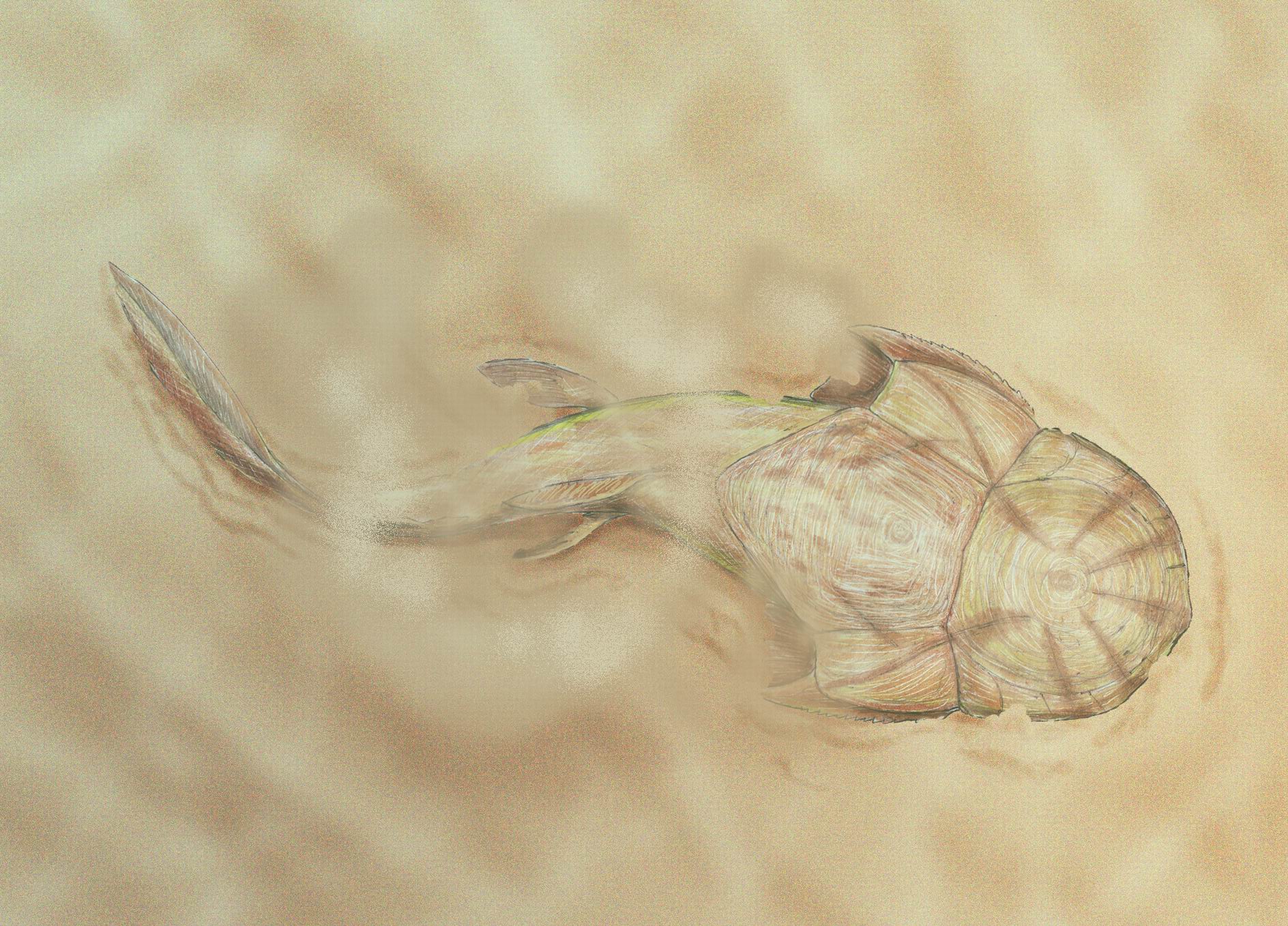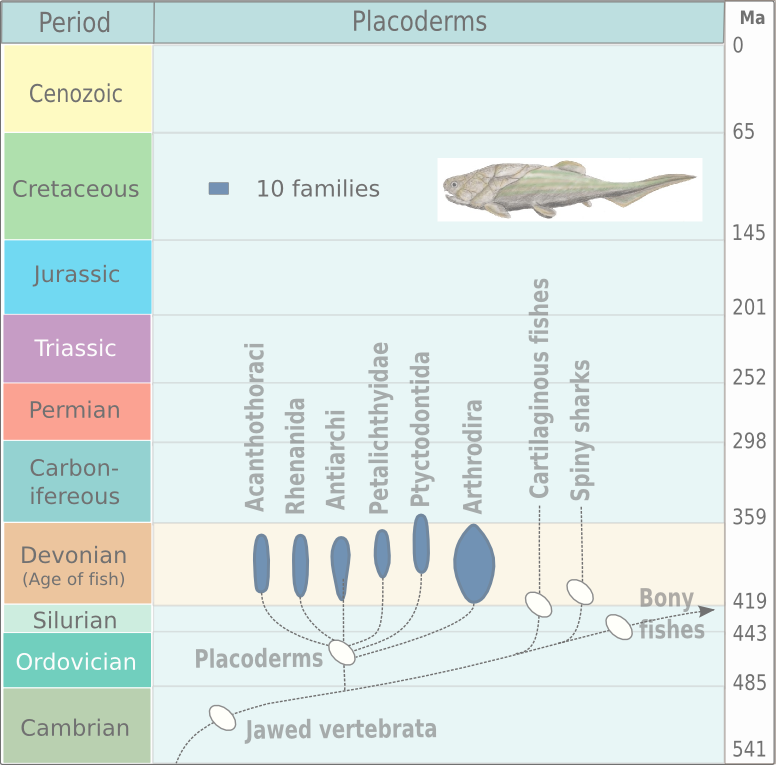|
Austrophyllolepis
''Austrophyllolepis ''is an extinct genus of phyllolepid arthrodire placoderm from Middle to Late Devonian freshwater strata of Australia. The type species, ''A. ritchiei'' is found in Givetian to early Frasnian-aged freshwater strata near what is now Mount Howitt. A second species, ''A. dulciensis'', is found from Middle Devonian freshwater strata from the Dulcie Sandstone of Georgina Basin The Georgina Basin is a large (c. 330,000 km2) intracratonic sedimentary basin in central and northern Australia, lying mostly within the Northern Territory and partly within Queensland.Smith, KG (1972). "Stratigraphy of the Georgina Basin ..., Central Australia. References A New Phyllolepid Placoderm Occurrence (Devonian Fish) from the Dulcie Sandstone, Georgina Basin, Central Australia. Placoderms of Australia Phyllolepids Fossil taxa described in 1984 {{placoderm-stub ... [...More Info...] [...Related Items...] OR: [Wikipedia] [Google] [Baidu] |
Phyllolepida
Phyllolepida ("leaf scales") is an extinct taxon of flattened placoderms found throughout the world, with fossils being found in Devonian strata. Like other flattened placoderms, the phyllolepids were bottom-dwelling predators that ambushed prey. Unlike other flattened placoderms, the phyllolepids were inhabitants of freshwater environments. Unlike the Rhenanida, the armor of the phyllolepids were made of whole plates, rather than numerous tubercles and scales, and unlike the Petalichthyida, the components of the comparatively wide mouth are known. The phyllolepids are considered to have been blind, as the orbits for the eyes are extremely small, so much so as to suggest that the eyes were vestigial, and that they were placed on the sides of the head, as opposed to visually-oriented bottom-dwelling predators, like, say stargazers or flatfish, which have the eyes placed high on top of the head. Despite having a relatively clear idea of the phyllolepids' lifestyle and anatomy, mo ... [...More Info...] [...Related Items...] OR: [Wikipedia] [Google] [Baidu] |
Phyllolepididae
Phyllolepididae is one of two families of phyllolepid placoderms. The family, as a whole, is believed to be descended from the Chinese placoderm, '' Gavinaspis ''(which forms the other, monotypic family, "Gavinaspididae"). All but two genera are, more or less, restricted to freshwater habitats of the Early to Middle Devonian of Australia. By the Frasnian, the genus '' Placolepis'' would spread throughout the world, with fossils being found in Australia, Turkey, Venezuela, and Antarctica, and by the start of the Famennian, phyllolepids would become extinct in Australia (then eastern Gondwana), with only species of ''Phyllolepis'' surviving in freshwater environments of Europe and North America. With the exception of ''Yurammia''. all phyllolepids have distinct ornamentation consisting primarily of concentric rings. Genera ''Phyllolepis'' The type genus is restricted to freshwater Famennian strata of Europe and North America. It is also the youngest genus of phyllolepid, be ... [...More Info...] [...Related Items...] OR: [Wikipedia] [Google] [Baidu] |
Phyllolepid
Phyllolepida ("leaf scales") is an extinct taxon of flattened placoderms found throughout the world, with fossils being found in Devonian strata. Like other flattened placoderms, the phyllolepids were bottom-dwelling predators that ambushed prey. Unlike other flattened placoderms, the phyllolepids were inhabitants of freshwater environments. Unlike the Rhenanida, the armor of the phyllolepids were made of whole plates, rather than numerous tubercles and scales, and unlike the Petalichthyida, the components of the comparatively wide mouth are known. The phyllolepids are considered to have been blind, as the orbits for the eyes are extremely small, so much so as to suggest that the eyes were vestigial, and that they were placed on the sides of the head, as opposed to visually-oriented bottom-dwelling predators, like, say stargazers or flatfish, which have the eyes placed high on top of the head. Despite having a relatively clear idea of the phyllolepids' lifestyle and anatomy, most ... [...More Info...] [...Related Items...] OR: [Wikipedia] [Google] [Baidu] |
Placodermi
Placodermi (from Greek πλάξ 'plate' and δέρμα 'skin', literally ' plate-skinned') is a class of armoured prehistoric fish, known from fossils, which lived from the Silurian to the end of the Devonian period. Their head and thorax were covered by articulated armoured plates and the rest of the body was scaled or naked, depending on the species. Placoderms were among the first jawed fish; their jaws likely evolved from the first of their gill arches. Placoderms are thought to be paraphyletic, consisting of several distinct outgroups or sister taxa to all living jawed vertebrates, which originated among their ranks. In contrast, one 2016 analysis concluded that placodermi are likely monophyletic, though these analyses have been further dismissed with more transitional taxa between placoderms and modern gnathosthomes, solidifying their paraphyletic status. Placoderms were also the first fish to develop pelvic fins, the precursor to hindlimbs in tetrapods, as well ... [...More Info...] [...Related Items...] OR: [Wikipedia] [Google] [Baidu] |
Arthrodira
Arthrodira (Greek for "jointed neck") is an order of extinct armored, jawed fishes of the class Placodermi that flourished in the Devonian period before their sudden extinction, surviving for about 50 million years and penetrating most marine ecological niches. Arthrodires were the largest and most diverse of all groups of Placoderms. Description Arthrodire placoderms are notable for the movable joint between armor surrounding their heads and bodies. Like all placoderms, they lacked distinct teeth; instead, they used the sharpened edges of a bony plate on their jawbone as a biting surface. The eye sockets are protected by a bony ring, a feature shared by birds and some ichthyosaurs. Early arthrodires, such as the genus '' Arctolepis'', were well-armoured fishes with flattened bodies. The largest member of this group, '' Dunkleosteus'', was a true superpredator of the latest Devonian period, reaching as much as 6 m in length. In contrast, the long-nosed '' Rolfosteus'' measured j ... [...More Info...] [...Related Items...] OR: [Wikipedia] [Google] [Baidu] |
Arthrodire
Arthrodira (Greek for "jointed neck") is an order of extinct armored, jawed fishes of the class Placodermi that flourished in the Devonian period before their sudden extinction, surviving for about 50 million years and penetrating most marine ecological niches. Arthrodires were the largest and most diverse of all groups of Placoderms. Description Arthrodire placoderms are notable for the movable joint between armor surrounding their heads and bodies. Like all placoderms, they lacked distinct teeth; instead, they used the sharpened edges of a bony plate on their jawbone as a biting surface. The eye sockets are protected by a bony ring, a feature shared by birds and some ichthyosaurs. Early arthrodires, such as the genus '' Arctolepis'', were well-armoured fishes with flattened bodies. The largest member of this group, '' Dunkleosteus'', was a true superpredator of the latest Devonian period, reaching as much as 6 m in length. In contrast, the long-nosed '' Rolfosteus'' measur ... [...More Info...] [...Related Items...] OR: [Wikipedia] [Google] [Baidu] |
Placoderms Of Australia
Placodermi (from Greek πλάξ 'plate' and δέρμα 'skin', literally ' plate-skinned') is a class of armoured prehistoric fish, known from fossils, which lived from the Silurian to the end of the Devonian period. Their head and thorax were covered by articulated armoured plates and the rest of the body was scaled or naked, depending on the species. Placoderms were among the first jawed fish; their jaws likely evolved from the first of their gill arches. Placoderms are thought to be paraphyletic, consisting of several distinct outgroups or sister taxa to all living jawed vertebrates, which originated among their ranks. In contrast, one 2016 analysis concluded that placodermi are likely monophyletic, though these analyses have been further dismissed with more transitional taxa between placoderms and modern gnathosthomes, solidifying their paraphyletic status. Placoderms were also the first fish to develop pelvic fins, the precursor to hindlimbs in tetrapods, as well as tru ... [...More Info...] [...Related Items...] OR: [Wikipedia] [Google] [Baidu] |
Animal
Animals are multicellular, eukaryotic organisms in the Kingdom (biology), biological kingdom Animalia. With few exceptions, animals Heterotroph, consume organic material, Cellular respiration#Aerobic respiration, breathe oxygen, are Motility, able to move, can Sexual reproduction, reproduce sexually, and go through an ontogenetic stage in which their body consists of a hollow sphere of Cell (biology), cells, the blastula, during Embryogenesis, embryonic development. Over 1.5 million Extant taxon, living animal species have been Species description, described—of which around 1 million are Insecta, insects—but it has been estimated there are over 7 million animal species in total. Animals range in length from to . They have Ecology, complex interactions with each other and their environments, forming intricate food webs. The scientific study of animals is known as zoology. Most living animal species are in Bilateria, a clade whose members have a Symmetry in biology#Bilate ... [...More Info...] [...Related Items...] OR: [Wikipedia] [Google] [Baidu] |
Chordate
A chordate () is an animal of the phylum Chordata (). All chordates possess, at some point during their larval or adult stages, five synapomorphies, or primary physical characteristics, that distinguish them from all the other taxa. These five synapomorphies include a notochord, dorsal hollow nerve cord, endostyle or thyroid, pharyngeal slits, and a post-anal tail. The name “chordate” comes from the first of these synapomorphies, the notochord, which plays a significant role in chordate structure and movement. Chordates are also bilaterally symmetric, have a coelom, possess a circulatory system, and exhibit metameric segmentation. In addition to the morphological characteristics used to define chordates, analysis of genome sequences has identified two conserved signature indels (CSIs) in their proteins: cyclophilin-like protein and mitochondrial inner membrane protease ATP23, which are exclusively shared by all vertebrates, tunicates and cephalochordates. These CSI ... [...More Info...] [...Related Items...] OR: [Wikipedia] [Google] [Baidu] |
Genus
Genus ( plural genera ) is a taxonomic rank used in the biological classification of living and fossil organisms as well as viruses. In the hierarchy of biological classification, genus comes above species and below family. In binomial nomenclature, the genus name forms the first part of the binomial species name for each species within the genus. :E.g. '' Panthera leo'' (lion) and '' Panthera onca'' (jaguar) are two species within the genus ''Panthera''. ''Panthera'' is a genus within the family Felidae. The composition of a genus is determined by taxonomists. The standards for genus classification are not strictly codified, so different authorities often produce different classifications for genera. There are some general practices used, however, including the idea that a newly defined genus should fulfill these three criteria to be descriptively useful: # monophyly – all descendants of an ancestral taxon are grouped together (i.e. phylogenetic analysis should c ... [...More Info...] [...Related Items...] OR: [Wikipedia] [Google] [Baidu] |







